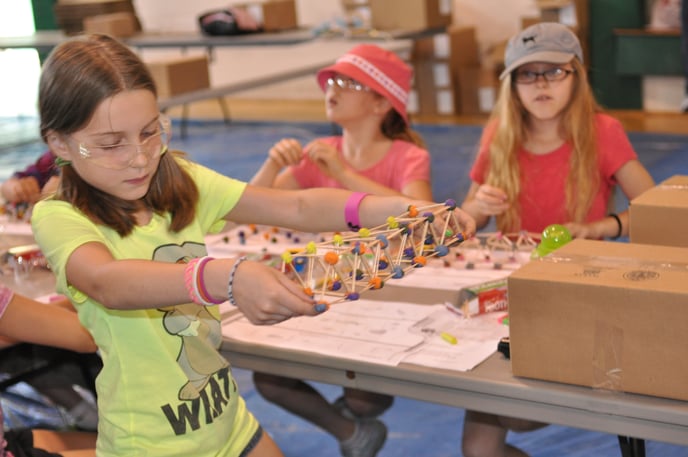
Those educators responsible for choosing a curriculum will need to be critical consumers to avoid investing in resources that are superficially “aligned” to NGSS but don’t fully articulate the vision of the NGSS so students can achieve the levels of mastery that will be expected of them.
NGSS’s vision for science instruction is that students need to be scientists and engineers in the classroom on an everyday basis.
That is the means by which they learn and also the means by which they'll be tested and expected to demonstrate their knowledge and skills.
Choosing NGSS-Designed—Not Just Aligned—Curriculum
To achieve this vision of the NGSS, it is essential to choose curriculum that isn’t just “aligned to NGSS” but is fundamentally designed for the new standards. Something that's aligned is often something that was once designed for something else. It has been changed or retrofitted to meet another need.
This has the potential to be problematic because these kinds of resources often only superficially incorporate NGSS.
There are four features that all truly NGSS-designed curriculum share:
- Coherence across a unit, between units in a year, and from one year to the next
Any science curriculum that is truly designed for NGSS will provide a coherent sequence of experiences that will help students meet the performance expectations. When you look at coherence, you have to think about individual units as well as how units build over time within a year.
It's important that there's coherence for students from one lesson to the next within a unit, from one unit to the next from September through June, and from one grade level to the next because that's how the knowledge and skills are built in the vision of the NGSS by the NGSS creators.
If districts aren't using curriculum that does this already, they need to start thinking about finding curriculum that has a sequence of topics within a year and from year to year that supports teachers as they build these coherent trajectories for student learning.
- Providing enough time for students to productively struggle
Any NGSS-designed curriculum also needs to provide sufficient time for students to spend in the “productive struggle to investigate and explain phenomena or design solutions.”
In other words, the curriculum needs to set students up for a grade-level appropriate, age-appropriate struggle so that students are engaged in the work as scientists and engineers and are learning through the work.
Students should be at a level where they don’t yet have the skills to perform the tasks proficiently. There needs to be a bit of a gap because the opportunity for learning comes when the level of challenge exceeds the level of skill. This is how students develop new capacity.
Curriculum is key because it provides that opportunity for students to attempt performance of the standards with feedback, which is what causes growth.
- Support for teachers in next generation instruction
The curriculum needs to support teachers with tools and strategies for how to manage this process because it's hard to envision and enact something you’ve never experienced.
The role of educators under these new standards is to really bring students into contact with the challenges across all three dimensions. The role of the teacher that is articulated by the curriculum should be as coach and not as demonstrator.
If you’re evaluating curriculum in which the teacher is the doer, it’s not NGSS-designed because it does not articulate NGSS’s vision for student learning.
- Time, space, equipment, and expendable materials that can be used for investigative and design projects
In addition to coherence, enough time spent in the productive struggle, and support for teachers, any NGSS-designed curriculum also needs to provide sufficient time, space, equipment, and expendable materials.
This is because science and engineering are all about investigation and prototyping.
The proximity of one opportunity to practice and explore to the next opportunity to practice and explore is really important. You get benefit from being in close proximity, so continuity matters.
Tools to Evaluate Curriculum
There are several tools out there to help you evaluate your existing or potential curriculum for these four features.
- National Research Council's “Guide to Implementing the Next Generation Science Standards” – This guide is available here from the National Research Council.
- PEEC alignment guide – PEEC tells you what cohesive trajectories look like and what a cohesive district-enacted resource looks like. PEEC looks at the series of units and series of grade levels. It will help you understand whether your district has NGSS-designed curriculum in place or something that's less effective.
- EQuIP rubric – Within the curriculum itself, the EQuIP rubric is helpful for assessing lessons and units. EQuIP provides a detailed rubric to help you determine how well lessons and units are designed for NGSS.





